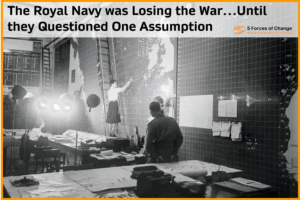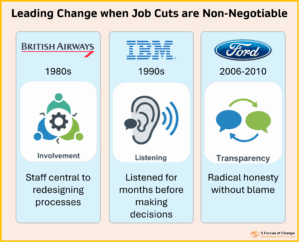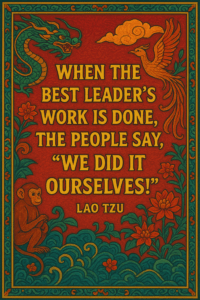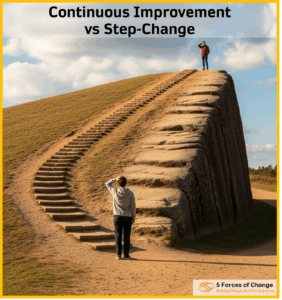When two organisations, employing hundreds or thousands of people, merge, a great deal of effort is given over to due diligence. Much time is devoted to poring over finances, integrating IT systems, telling the stock market about synergies and drawing up new structure charts. However, it can take some time to dawn on leaders that people change more slowly and in more complex ways than systems and processes.
is devoted to poring over finances, integrating IT systems, telling the stock market about synergies and drawing up new structure charts. However, it can take some time to dawn on leaders that people change more slowly and in more complex ways than systems and processes.
Unlike some significant changes, mergers and acquisitions have an enormous effect on culture and people’s sense of identity. If one organisation effectively takes over another and imposes its culture on the new combined organisation, like an invading army, then people in the organisation that has been taken over can have a very hard time adjusting.
 Potential Approaches
Potential Approaches
One option is to start afresh, setting aside the cultures of the two organisations involved and creating a new culture for the new organisation. This can be invigorating for all concerned as they work together to create something fresh and exciting. This approach proved highly successful in the merger of Glaxo Wellcome and SmithKline Beecham when they formed GlaxoSmithKline (GSK). This company is not only a huge commercial success, but is also recognised around the world as one of the best companies to work for.
Another option is simply to do nothing about culture. Take the example of a merger between two universities that did little to acknowledge the impact of change at a human level. Even today, many years later, academics will tell you that the university remains split in two in all but name. As a result, many people lack a feeling of belonging or passion for the university. Some just carry on as if the merger never took place, others actively undermine any attempts to capitalise on the opportunities created by merger.
For leaders who don’t have the option of starting afresh and who don’t want to alienate their people, especially those who have been ‘taken over’, there needs to be a strong focus on helping people work through the difficult emotions triggered by mergers and acquisitions. It is tempting to shy away from these issues and many leaders may feel ill-equipped to deal with them. However, there are some simple tools and techniques that are extremely effective and easy to apply.
Proven Techniques
A good starting point is to acclimatise people from the organisation that has been ‘taken over’ to the culture of their new employer. They need to understand the vision and values of the organisation and be clear about expectations and cultural norms.
Unlike new recruits, who have chosen to join your organisation voluntarily, people who have been taken over are unlikely to have even been consulted about, let alone involved in, the decision to merge. They are likely to have a strong allegiance to their old organisation whilst feeling hurt at being ‘sold off’. They may well resent having change foisted on them and will be suspicious of the intentions of their new employer who has already committed the aggressive act of taking them over.
consulted about, let alone involved in, the decision to merge. They are likely to have a strong allegiance to their old organisation whilst feeling hurt at being ‘sold off’. They may well resent having change foisted on them and will be suspicious of the intentions of their new employer who has already committed the aggressive act of taking them over.
So, how do you help people to get past these difficulties and ultimately engage them enthusiastically in making the new merged organisation a success? One thing is for sure, if you do nothing you will suffer a long period of resentment and dysfunctional behaviour. Your customers will suffer and so will you.
In 2006, a number of regiments of the British army were merged. There was a good deal of consternation at the thought that many regiments with proud histories would ‘disappear’. For example, The Green Howards merged with the Prince of Wales Own Regiment of Yorkshire, and the Duke of Wellington’s Regiment, to form The Yorkshire Regiment. As part of this process a history of The Green Howards was commissioned, which demonstrated how the regiment’s history has been one of change and merger since it first came into being as Colonel Luttrell’s Regiment of Foot in 1688. The regiment had even been known as the Yorkshire Regiment once before (during World War I). So, far from disappearing, it was continuing on its long journey of evolution and change.
 One powerful technique that has parallels with the example of the British army mergers is the Timeline Method – plotting past, present and future changes on a timeline and examining issues and emotions associated with each. This serves three main purposes; it helps people to see the change in its broader context, to separate fact from fiction and to start to look ahe
One powerful technique that has parallels with the example of the British army mergers is the Timeline Method – plotting past, present and future changes on a timeline and examining issues and emotions associated with each. This serves three main purposes; it helps people to see the change in its broader context, to separate fact from fiction and to start to look ahe

ad to rather than getting stuck in the past. This leads people into focusing on the future in a constructive way rather than getting stuck in the past and dwelling on negative issues.
Some organisations have come to realise the importance of ceremony in helping people let go of the past and binding them together as a team that will succeed in the future. In the rush to move forward it pays to acknowledge the past. One effective approach is to create a ceremonial event that allows people the opportunity to recount past history and to pay tribute to past successes before setting out a vision for a brighter more successful future. It is useful to include an element of celebration as this marks a turning point in people’s lives when they can break with the past and look forward to the next big adventure.
Finally, as with any major change, trust is critical to success. This requires vigorous, transparent and continuous communication and leaders who are committed to the change in word and deed.
Learn More
For more on leading people through mergers, see the ‘The Leading Successful Change‘ eLearning course or the two books: ‘The 5 Forces of Change – a blueprint for leading successful change’ and ‘5 Tales of Change – how people have wrestled with change and one’, available in paperback and Kindle editions.


 Potential Approaches
Potential Approaches





